Oyster mushrooms are an easy gourmet mushroom to grow on your homestead. Growing oyster mushrooms can be fun and rewarding, and a great way to begin investigating an learning the wide realm of mycology. Mushrooms are fun, fascinating, tasty, and great for your garden, plate, and environment.
Growing Oyster Mushrooms at home
Oyster mushrooms are fascinating fungi that can grow on many different substances, from hardwood logs, wheat straw, coffee grounds, or even old cotton clothing. In the developing world, oyster mushrooms are bringing families without agricultural land out of poverty, giving them a product that they can sell in the market, improving their standard of living. A lot of research has been done on different methods of growing oyster mushrooms that can help you, as a backyard homesteader, to grow these amazing fungi.
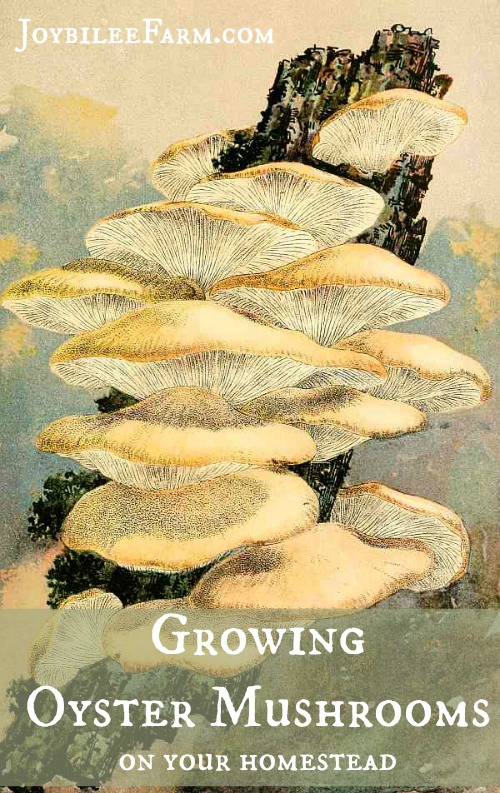
Medicinal oyster mushrooms
Oyster mushrooms are both culinary and medicinal, containing high amounts of immune boosting beta glucan and triterpenes that support the body’s stress and adaptive responses. In fact, oyster mushrooms have many of the same properties and characteristics as the more expensive mushrooms used in herbal supplements, like reishi, cordyceps, and turkey tail. They also have the same characteristics as shiitake mushrooms, which are used both for herbal purposes and for culinary purposes. But, oyster mushrooms are easier to grow at home, and are often faster to grow than the more supplement focused varieties.
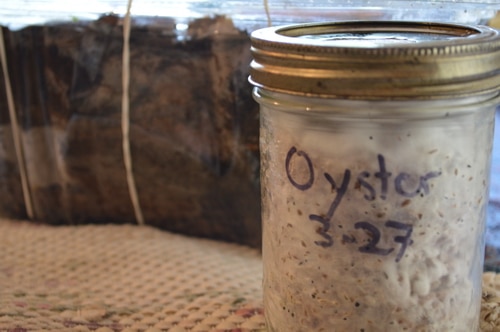
How to cook oyster mushrooms
Of course, oyster mushrooms, like all mushrooms, should be cooked before eating them. In cooking they function the same way as more familiar white button mushrooms, crimini, or portobellos, so you don’t need any specialized cooking skills to utilize your harvest. Fry them in a little butter and add them to pasta, meat dishes, or top a pizza with them, and you’ll be on your way to enjoying their health and nutritional benefits.
Oyster mushrooms can also be dried, for preservation purposes, or fried in butter and then frozen. Avoid freezing fresh mushrooms, unless you plan to use them for soup, as the freezing breaks down the cell walls making for a watery mushroom dish.
Perpetual oyster mushrooms
Best of all, when you grow your own oyster mushrooms you can perpetuate the mycelium, your mushroom starter culture, much like sourdough. This was new information for me. Your initial starter mycelium can be grown out on sterilized medium like wheat berries or rye, so that your starts of oyster mushrooms can continue for a long time. Keep your containers of starting medium sterile and add the mycelium in generous amounts and your oyster mushroom mycelium will be strong and prolific.
I recently listened to a talk by Tradd Cotter, where he talked about perpetuating a bin of oyster mushroom mycelium by dividing a starter mix into 10 parts and perpetuating it. Each week, take the strongest of those and begin another 10 bins, while allowing the former 9 to populate their substrate and fruit out. Your original 9 will produce edible mushrooms in about 4 weeks. And will produce a second flush of mushrooms a week or two after that. The size of the harvest is dependent on the amount of growing medium. But generally 1 lb of growing medium will produce ¾ to 1 lb. of oyster mushrooms. In this way your small beginning of oyster mushroom mycelium can generate hundreds of lbs of mushrooms in a few months.
Oyster mushrooms can grow on waste paper, wood shavings, straw, and spent coffee grounds, so the expense is minimal for the rich source of protein and neutriceuticals they offer. Check out the waste in your recycling bin and see if you might have the beginnings of an in-home mushroom farm, just waiting to be exploited. Today, my recycling bin contains toilet paper rolls, printer paper, and cardboard boxes, while my compost pail contains spent coffee grounds and egg shells, all ideal oyster mushroom growing medium.
You can also grow oyster mushrooms on hard wood logs, much like shiitake mushrooms. Use spawn plugs or sawdust mycelium to inoculate logs and wait 3 to 6 months for the spawn run. The plug spawn are easier to use than the sawdust, if this is your first experience innoculating mycelium in logs.
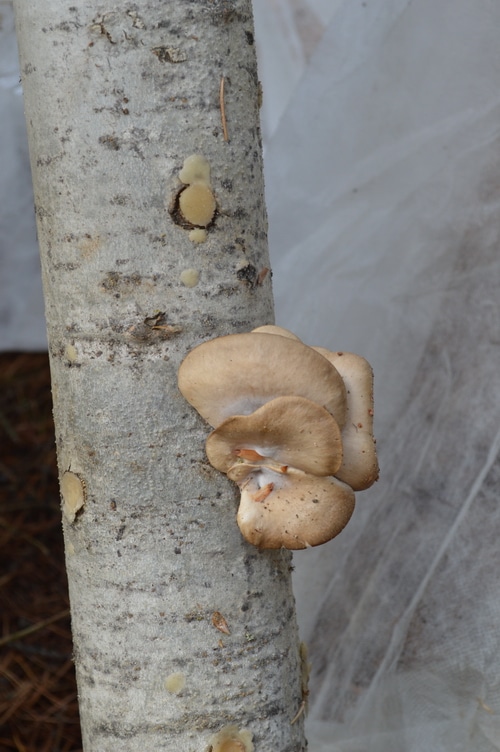
The spawn run is dependent on the size of the logs and the relative humidity and temperature. When the spawn run is finished you’ll notice white splotches on the sides and ends of the logs. This is the mycellium, the tiny roots of mushrooms, drawing nourishment from waste wood.
Mushrooms won’t fruit until the spawn run has used up all available nourishment in the growing medium, whether logs or other medium, like straw or coffee grounds. Once the mycelium has fully impregnated the medium, the oyster mushrooms will fruit. Oyster mushrooms are aggressive and will fruit in 3 to 6 weeks from spawn run. Why didn’t we know about this before? Think of all the mushroom harvests we’ve already missed.
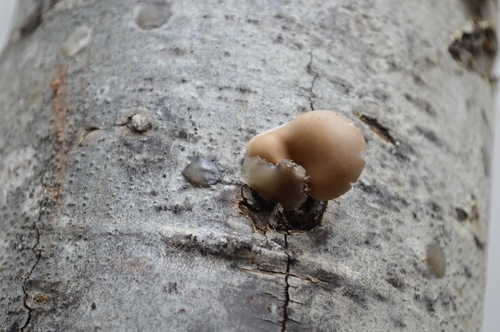
Where to find oyster mushroom mycelium
My research into Oyster mushrooms had me intrigued enough to find an internet source of oyster mushroom mycelium. Well, I found out that it’s not so easy in Canada. Mushroom mycelium is a living thing, and so you can’t just order it on Amazon.com and have it sent across the border. There are only a few places in Canada to order mycelium. There are spawn suppliers in Ontaria, British Columbia, and Quebec. If you are in the US, check your local state for suppliers before ordering from out of state. Since mushrooms are an agrigultural product, in a growing medium, they may be classified under an agricultural restriction for some states. However, you can start some mushroom varieties from store bought mushrooms. I did it with store bought oyster mushrooms, and you can follow along from my post on growing mushroom mycelium from store bought oyster mushrooms.It also works with button and portabello mushrooms.
While there are risks of failure in beginning this way, at least it’s a cheap way to get started. If you live in the USA, on the other hand, Amazon is a rich source of mushroom spawn, mushroom sawdust, and mushroom plugs. Lucky you!
If you live in Hawaii, you may need to start with an oyster mushroom or an oyster mushroom kit. Rather than grow out the kit though, open it up in a sterile environment and divide it between sanitized substrates to get your mycelium running.
Many years ago I purchased an oyster mushroom kit from Richter’s Herbs. It was a bag of sawdust and oyster mushroom mycelium that came with minimal instructions.
Oyster mushrooms need a little bit of light when fruiting but they don’t want direct sunlight. They need to be misted 2 or 3 times a day to fruit properly. As well, they give off carbon dioxide and need an exchange of fresh oxygen while fruiting so that the fruit is not misshapen and dwarfed. Ideally grow your oyster mushrooms in the bathroom or another high humidity area, and have a fig tree or a lemon tree growing next to them to offer more oxygen, if you aren’t growing them outside. I got only 1 harvest from my kit and then my buttons didn’t mature in the next flush. Back then, I decided that growing mushrooms was too hard to do at home.
I think after doing this little bit of research I’m ready to try again. I’m intrigued about growing oyster mushrooms on ragged blue jeans. I’ll let you know how it goes.
Update August 5, 2015
I did it! Here’s my first flush of oyster mushrooms grown on cardboard and coffee grounds, in a plastic salad box.
I started these with a tissue culture from store bought oyster mushrooms. I cultured them on grain for 2 generations and then used the grain to inoculate a sterilized box of coffee grounds layered with newspaper. It took quite a few weeks and then one morning I looked and this is what I found.
So cool! Growing food from waste! If I can do this, you can to.
Update: We got 3 flushes of oyster mushrooms from this box of coffee grounds and paper waste. Then I tossed it into the garden and it produced another flush of oyster mushroom the following spring.
New to Growing Mushrooms?
There is a wide variety of mushrooms that are safe, fun, and easy to grow at home. These include oyster, shiitake, lions mane, wine cap, reishi, and more.
You can learn more about using mushrooms in the garden to help your other plants grow, as well as growing mushrooms for food, in our new book, “Growing Mushrooms for Beginners“. (Rockridge Press, 2021) Written by my daughter, Sarah Dalziel-Kirchhevel, for Joybilee Farm, Growing Mushrooms for Beginners can help you grow mushrooms at home for food and medicine, using whatever space you have — whether you have a garden or just a balcony or a spare bedroom.

Learn more about growing mushrooms in the garden
Sarah’s new book, Growing Mushrooms for Beginners, A Simple Guide to Cultivating Mushrooms at Home, is available on Amazon and Barnes and Noble. In this concise resource Sarah guides you step by step through growing mushrooms on logs, on straw, on wood chips in the garden, or even in Mason jars in your kitchen. The book includes instructions for growing seven mushrooms including shiitake, oyster, lions mane, garden giant/wine cap, and more. Learn the unique characteristics, flavors, health benefits, and specific growing requirements for each mushroom as well as space saving tips and recipes to get the most out of your mushroom harvest.
Get your copy of Growing Mushrooms for Beginners now.


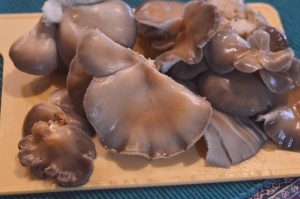
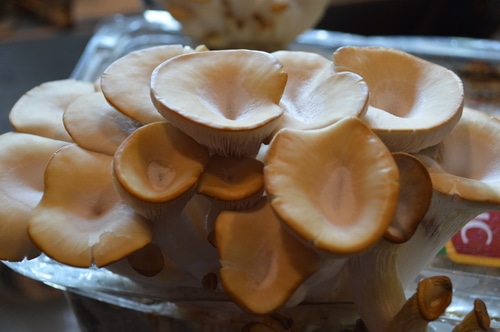
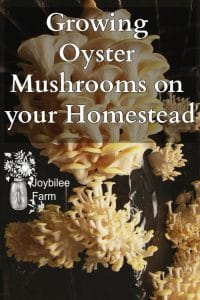
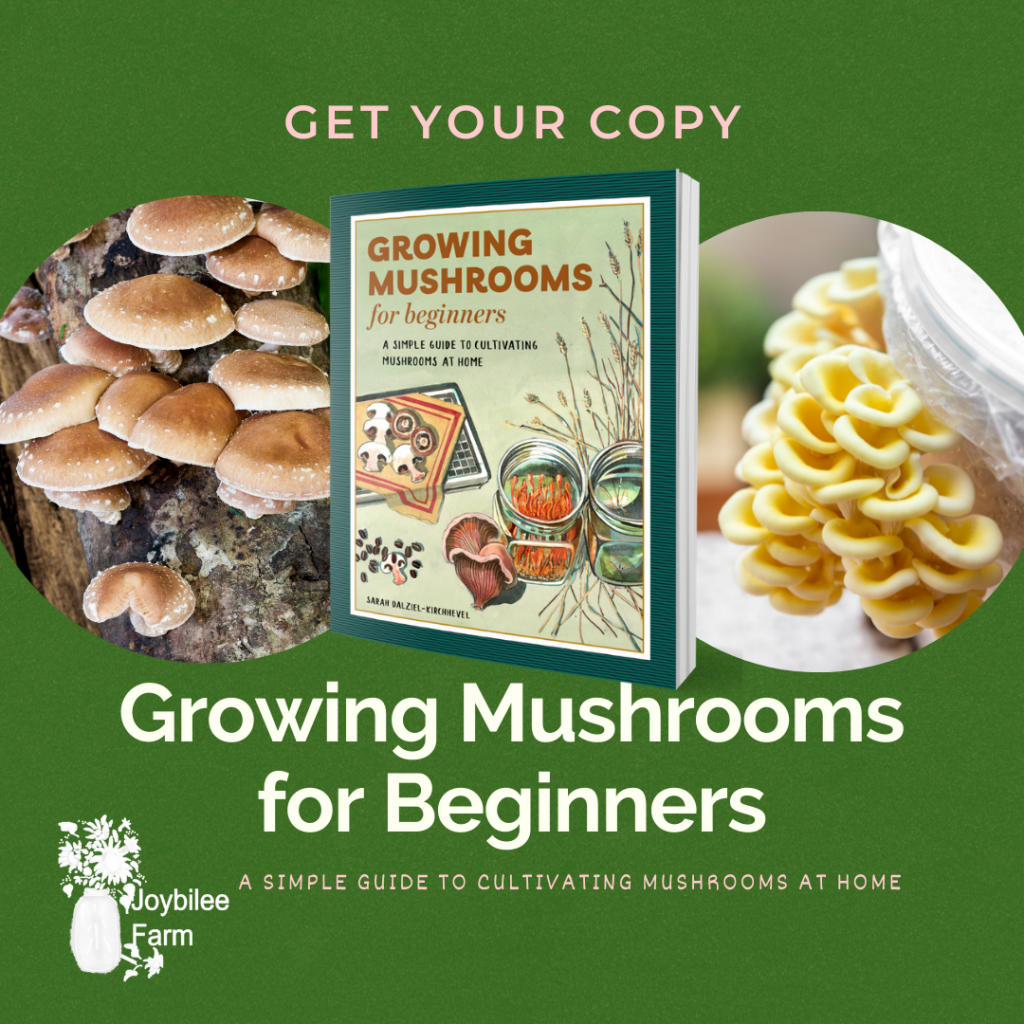


The living tree produces antifungal constituents that will prevent mushrooms from colonizing. Usually we wait 2 to 4 weeks for these to stop before inoculating a stump with spawn.
Novice question: We are going to cut down several mulberry trees with trunks about 8″ in diameter. and leaving a 3-4 ft. trunk for growing oyster mushrooms. I heard they like mulberry. We’ll continue clipping any sprouts so that the tree dies. Should one add spawn immediately or wait? Thanks.
Hi,
How Can I order BLUE OYSTER MUSHROOM growing kit from Istanbul ?
Please advice
Regards ,
Selcuk Utku